Stephan Vasement is a Bangkok-based second-wave AI artist known for his emotive and striking digital artworks. Vasement’s work is inspired by French music and photography as well as art cinema and his own emotional journey, particularly embodied in his Europe After the Rain collection.
A key aspect of Vasement’s work is its emotional dimension. His creations during periods of anger or frustration so embody the negative emotions of the time that he has a hard time revisiting them. Having risen out of that mindset, he hopes his work brings a sense of joy to its viewers and can make their day a little better.
Currently, Vasement is focused on completing his Swans collection, which he plans to release all at once. Furthermore, he is venturing into AI video research, demonstrating his constant drive for innovation and exploration in AI artistry. His creativity, passion, and commitment to pushing the boundaries of AI art make Stephan Vasement an artist to watch.
BW: Could you please introduce yourself to our readers?
SV: Hello, my name is Stephan Vasement. I am known as a second-wave AI artist.
The term “second wave” refers to artists who emerged with the advent of technological advancements such as Stable Diffusion and Midjourney. These tools are currently revolutionizing the art world. The potential they unlock is truly limitless, and they continue to improve day by day.
I started exploring this medium in June 2022, and I’m incredibly satisfied with the progress I’ve made thus far.

BW: Did you create art prior to your involvement with AI? If so, what was the nature of your work?
SV: Yes, I was actually a street photographer before delving into AI art. It was more of a hobby than a profession, and my work was largely unseen. Nonetheless, I cherish those memories.
My routine would involve exploring the city from morning till evening, seeking interesting subjects or scenes. One of the biggest challenges was remaining composed when photographing strangers – a tension I was never quite able to overcome. Despite this, I certainly don’t miss those moments.
What intrigued me was the ability to capture a slice of life and distill it into a two-dimensional image that had its own unique narrative and rules. I pursued this for several years, and the experience remains invaluable to me.
Most of my photographs were in black and white, heavily inspired by Henri Cartier-Bresson. His exceptional skill in framing, space comprehension, and geometry influenced my initial foray into visual art.
BW: Can you tell us about your journey to Bangkok?
SV: Prior to living in Bangkok, I spent a year in a small coastal town in Turkey. It was a quaint tourist hub, primarily populated by British retirees.
However, due to the rapidly deteriorating economic climate, it became unsustainable to continue residing there. Living costs were escalating swiftly, and with my residence permit nearing expiry, I needed to commit to a year-long apartment lease to extend it. A single upfront payment would have amounted to around $7000, an expenditure that simply didn’t seem justifiable.
Consequently, I began exploring potential relocation options. Bali initially topped my list, but I decided to stop in Bangkok for a month en route out of curiosity. In a surprising turn of events, I found myself enchanted by the bustling, vibrant city and never continued to Bali. For the foreseeable future, Bangkok will be my home.

BW: You have a background in scriptwriting, and you’ve mentioned several filmmakers like Andrei Tarkovsky, Peter Greenaway, and Robert Bresson as influences. Could you explain your relationship with cinema?
SV: The correlation between my artwork and cinema might not be immediately apparent, as my current focus is primarily on single-shot pieces. Consequently, the influence of film on my work is currently more conceptual than technical. Interestingly, I find music to be more integral to my creative process, often visualizing entire worlds through melodies which can subsequently be manifested in my art.
That said, I am excited by the prospect of AI video creation tools becoming more sophisticated. While they currently fall short of my desired output quality, I believe it’s just a matter of time before they meet my expectations.
Tarkovsky, Bresson, and Greenaway have had a profound impact on my worldview. In Tarkovsky’s philosophy, I find a useful framework for navigating the personal changes triggered by a lengthy and fulfilling artistic journey. While I don’t align with him on all fronts, his reflections help me articulate the questions I need to answer for myself.
Bresson’s insights into deconstruction theory have spurred my intellectual curiosity. A posthumous publication of a lecture he delivered in 1955 (in Les Cahiers du cinéma) continues to resonate with me. His poignant critique of cinema’s imitation of theatrical norms significantly shifted my understanding of art.
Eventually, I discovered another inspirational figure who examined art on a similar level, Martin Margiela. His innovative approach to the fashion industry continues to influence my work. His collection for Hermes, which was met with critical misunderstanding, is now regarded as masterful and timeless. His unwavering commitment to his artistic vision in the face of criticism is something I deeply respect. Even though I may never emulate his achievements, appreciating such creative minds is reward enough.
As for Peter Greenaway, I would recommend viewing The Baby of Mâcon. Although it remains relatively unknown, I firmly believe it is destined to be recognized as a cinematic masterpiece. This film, which also encompasses deconstruction, has significantly influenced my artistic perspective.
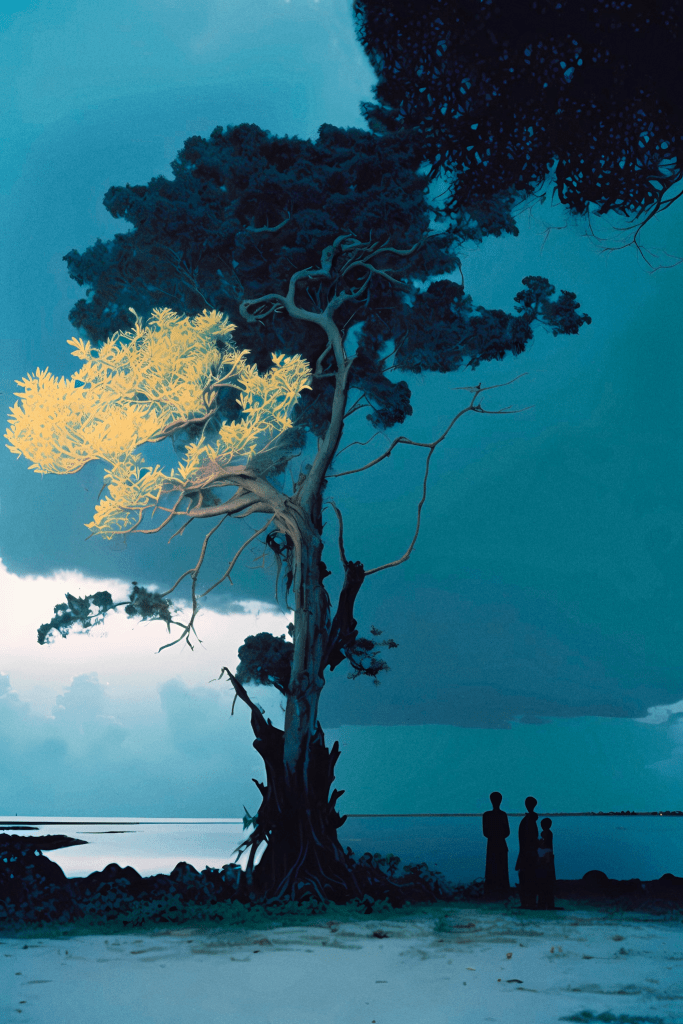
BW: With your background in screenwriting, do you have any specific narratives you’re keen to express?
SV: That’s a challenging question, one that I’m perpetually contemplating and redefining. I find myself drawn to the juxtaposition of emotive expression and nuanced subtext. I vacillate between these two approaches and haven’t yet settled on a conclusive stance. Perhaps it’s too soon to make such a determination? We’re exploring a whole new artistic landscape. My inclination is to delve into as many facets of this domain as possible before settling on one direction. It’s a time for exploration.
Generally speaking, my creations are usually influenced by my current emotional state. My life hasn’t been an easy journey, and I didn’t find inner peace until my 30s. Now, each day feels miraculous, and I’m profoundly grateful for this newfound perspective. I’m cognizant that many people are currently grappling with fear, sadness, and loneliness. My hope is to provide some solace through my art, crafting elements of beauty, comfort, and tranquility. Once we overcome these trying times, perhaps my focus will shift, but life has taught me the importance of living in the present rather than dreaming of the future.

BW: How do you believe your photography background has shaped your use of AI?
SV: It has had an immense influence. First and foremost, street photography honed my ability to select the most compelling elements, a skill that’s crucial in AI art. In a single day, I could capture up to 1000 shots, ultimately selecting just 3 to 5. If fortunate, at least one of those would fill me with pride after a few months.
Secondly, studying the work of Henri Cartier-Bresson taught me valuable lessons about composition, timing, and the transformative power of a captured moment. It showed me how the physical space around a subject can be altered on film, distilled into lines, circles, and geometric shapes that collectively create a new narrative. I’ve carried these insights over into my AI art.
However, when it comes to stylistic considerations, I don’t believe I’ve carried much over from my photography days. And truthfully, I didn’t particularly intend to.

BW: Your piece, Abandoned Temple, undeniably benefits from the AI-induced ambiguity — blurred tiny figures that could be interpreted as birds, flowers, or something entirely different. How do you approach this serendipitous aspect of your collaboration with AI?
SV: Abandoned Temple represents an intriguing application of deconstruction in my work.
I created it during the early iterations of Midjourney, specifically the second version, which rendered everything in a similar style. Many artists were transitioning to Stable Diffusion at that time.
I realized then that adhering to the standard rules would inevitably lead to homogeneous results, all merging into a common aesthetic. However, I discovered a minor glitch in the system that completely distorted the images, generating highly abstract results. These pieces starkly contrasted the conventional works being produced. It turned the process into a game not just with words, but with the algorithm itself. While the initial results were less than desirable, I gradually learned to manipulate the glitch to my advantage. These distinctive works marked my first success in AI art.
Eventually, the developers of Midjourney discovered and rectified this glitch. I reached out to them, hoping they might retain it, but received no response. I tried to locate others who might be aware of this glitch, but it appeared I was the only one who had stumbled upon it.
As a result, that chapter in my artistic journey has concluded. There’s no way to generate anything similar now, which I believe lends unique value to the works I produced during that period. In the future, I plan to mint the best pieces from this archive, provided there’s a demand for them.
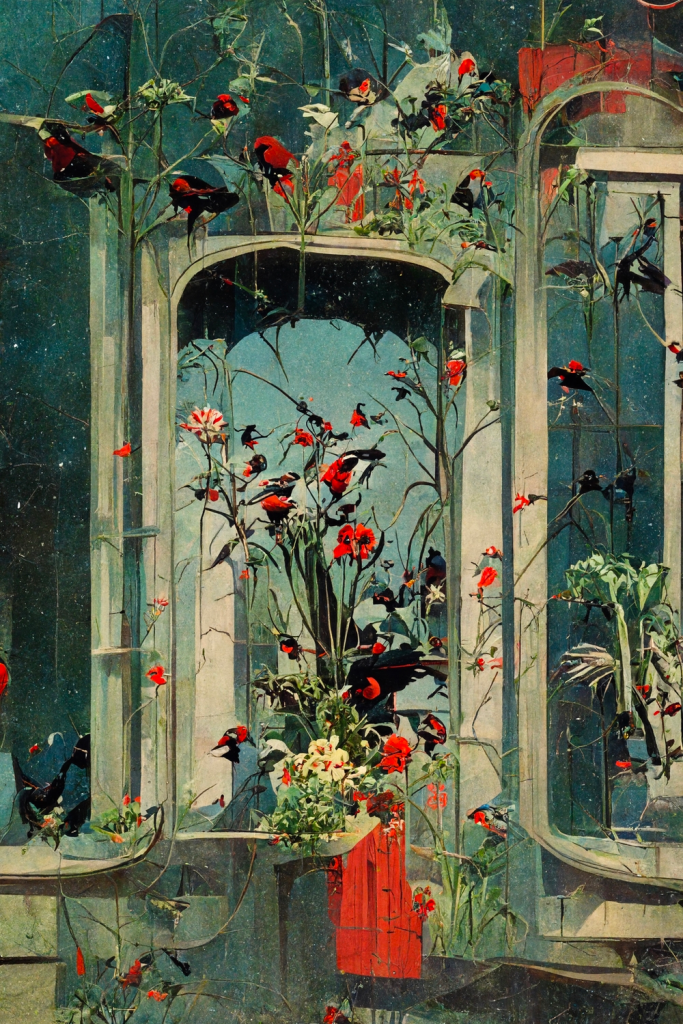
BW: This piece appears to merge your recurring themes of nature – specifically birds and flowers – with a sort of religious ceremony. What is it titled, and what insight can you provide about it?
SV: The piece is titled Newborn and will be part of a collection called Swans.
The inspiration for the collection emerged amidst the current bear market. Presently, there is significant stress and tension, evidenced by escalated disputes and harsh language, which previously weren’t as prevalent. I regretfully admit to succumbing to this tension at times, an action I’m not proud of. This collection aims to metaphorically depict what’s happening to us, focusing solely on the NFT world.
Specifically regarding Newborn, it encapsulates a peculiar trend in our space that many seem to endorse. It involves creating new, anonymous accounts featuring works adhering to popular aesthetics. Surprisingly, these hastily created pieces receive considerable support from collectors, leading some artists, whose work isn’t selling, to create anonymous accounts of their own.
The scenario portrayed here involves collectors and artists collaboratively birthing a new entity – a creature with wings but no head, symbolizing a creation that may not be sustainable or long-lasting. Yet, this is the cycle we find ourselves in, observing from the sidelines, which I believe introduces an element of neutrality to the piece.
Interestingly, this narrative sometimes evolves in unexpected ways. An account initially started on a whim can captivate the creator, drawing them completely into their work. In essence, they discover a sense of purpose in it, which is incredibly rewarding.
The remaining pieces in the collection will follow a similar trajectory. While I’m unsure about the interest or demand these works might attract, my concern isn’t failure but rather the regret of not daring to attempt. Progress on the collection is slow but steady.
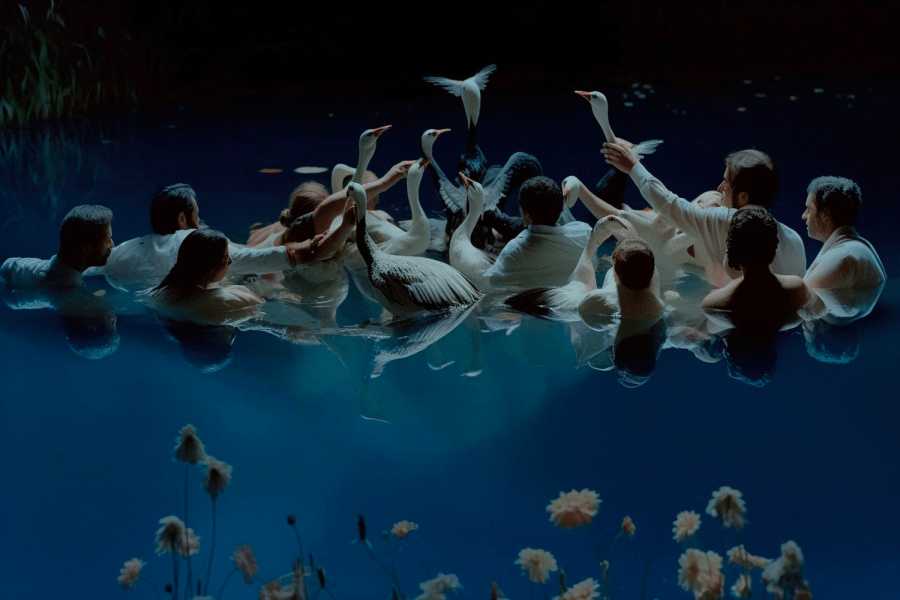
BW: Can you share some insight into The Spy and The Lover?
SV: Certainly. The genesis of the piece is quite straightforward. While exploring a new version of Midjourney, I found some of the outputs intriguing. One of these was a dark silhouette standing in the undergrowth. This caught my attention and I began refining the concept, which eventually yielded the first iteration of The Spy. Later, I reshaped the silhouette using DALL-E, as the original appeared somewhat whimsical and playful. I believe I succeeded in infusing the figure’s posture with a sense of ominousness. Even now, the first question that pops into my head is, why is he there? He seems out of place.
After creating The Spy, the idea of designing a companion piece persisted. I envisioned a second version with red flowers and a feminine silhouette, a piece that would complete the narrative and create an entire world alongside The Spy. These two artworks could have laid the foundation for a full collection, but I was not inclined toward dark art at that time, so I shifted my focus.
The inception of this duology can be traced back to a work titled The Introvert. This piece also incorporates black silhouettes and conjures unsettling associations. It depicts a man lingering hesitantly near a bar that fuses with a tree to form a creature of sorts. The title makes it a fairly straightforward metaphor, and I believe it accomplishes its objective.
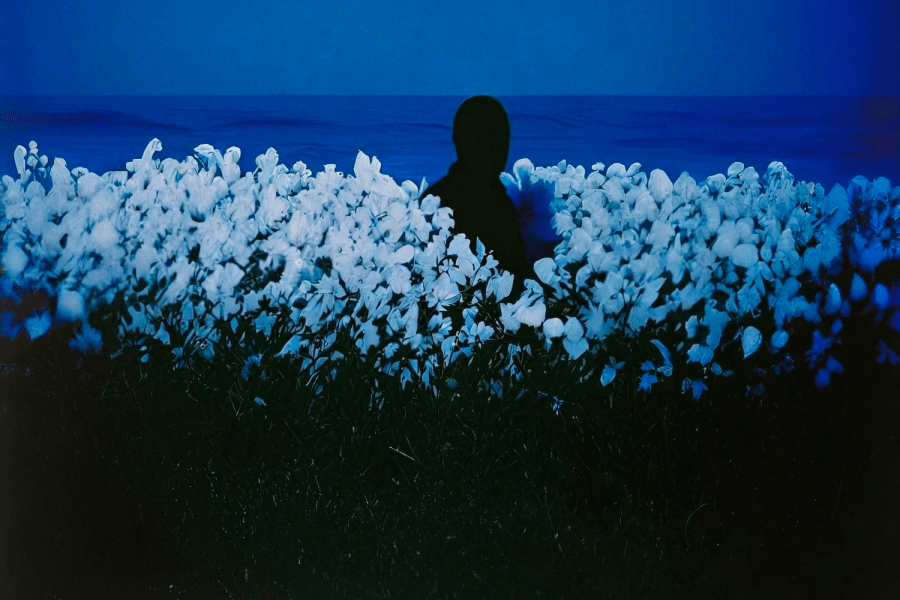
BW: After examining your body of work across various platforms, I consider Quiet Corner and its close relative Night Pond as quintessential examples of your artistic style. Can you provide some background on these pieces?
SV: Those are comparatively recent creations, and music played a significant role in their inspiration.
The concept and ambiance emerged when I listened to the a cappella version of Bach by The Swingle Singers. More specifically, it was the Orchestral Suite No. 3 In D Minor, Largo [Harpsichord Concerto No. 5 in F minor BWV 1056] and Andante from Sonata 2 A Minor that sparked the idea.
These compositions evoked a powerful image of an English night from a bygone era, set amidst old estates during the blue hour, a time when everything becomes steeped in whispers, intrigue, and a hint of mysticism. In such tranquility, it seemed as if everything was suspended in time.
As a child, I remember stumbling upon movies on television that contained similar elements, though I can’t pinpoint a specific example. Perhaps it’s a blend of those memories and my own imagination.
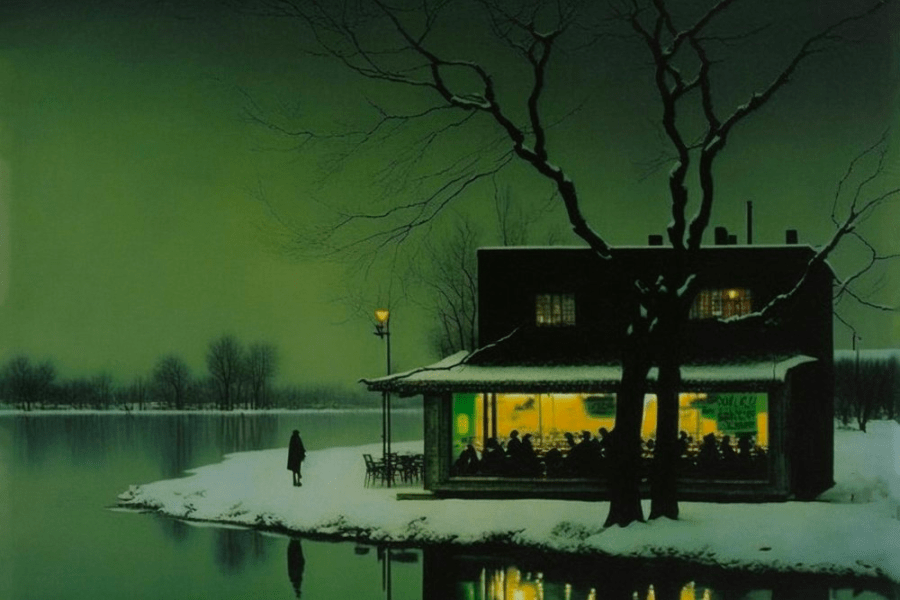
BW: I’m particularly fond of your black and white pieces, a style you seemingly haven’t returned to since 2022 (which feels like decades in AI art time!). Z-14 is perhaps my favorite among them. Given your extensive experience with black-and-white photography, do you intend to create more black-and-white images, especially considering the substantial advancements that have occurred since those pieces were minted?
SV: To be frank, those black and white works were created during a rather negative period in my life. I don’t even recall what had upset me at the time, but I created them swiftly as a means to channel my anger and frustration. Therefore, I hope I never feel compelled to return to such pieces.
However, the exploration of life in black and white continues. The collection called Europe After the Rain is inspired by my love for French aesthetics. I am an ardent admirer of French music and photography, and this collection is my tribute to them. I envisage that the collection will gradually expand when the right moment arises.

BW: Could you share what’s in your art-making toolbox?
SV: Currently, I exclusively use Midjourney. Oddly enough, Stable Diffusion doesn’t strike me as sufficiently… poetic? I just don’t see the lyrical quality in it. But Midjourney certainly has it.
BW: How do you structure your creative workflow? Do you keep a record of your prompts and refine them?
SV: It’s a crucial part of the process. Midjourney provides a robust platform that aids in tracking your progress. It’s a feature one shouldn’t ignore. I routinely revisit the appropriate prompts, reassess old pieces… I’d recommend everyone to adopt this practice. It’s quite beneficial.
BW: Could you shed some light on your best practices when it comes to prompting?
SV: Generally, I try not to overthink and trust the process. I enter a prompt, assess the output, tweak it if necessary, and then submit a new request. Occasionally, this process deviates me far from my initial plan, but that doesn’t concern me.
It’s vital to grasp how the neural network operates. This understanding doesn’t necessarily need to be technical; it can simply be based on experience. Avoid excessively long prompts (especially in Midjourney), as most of the words will likely neutralize each other. I’ve noticed examples of unwieldy prompts online, but they could be condensed to ten words and yield the same result.
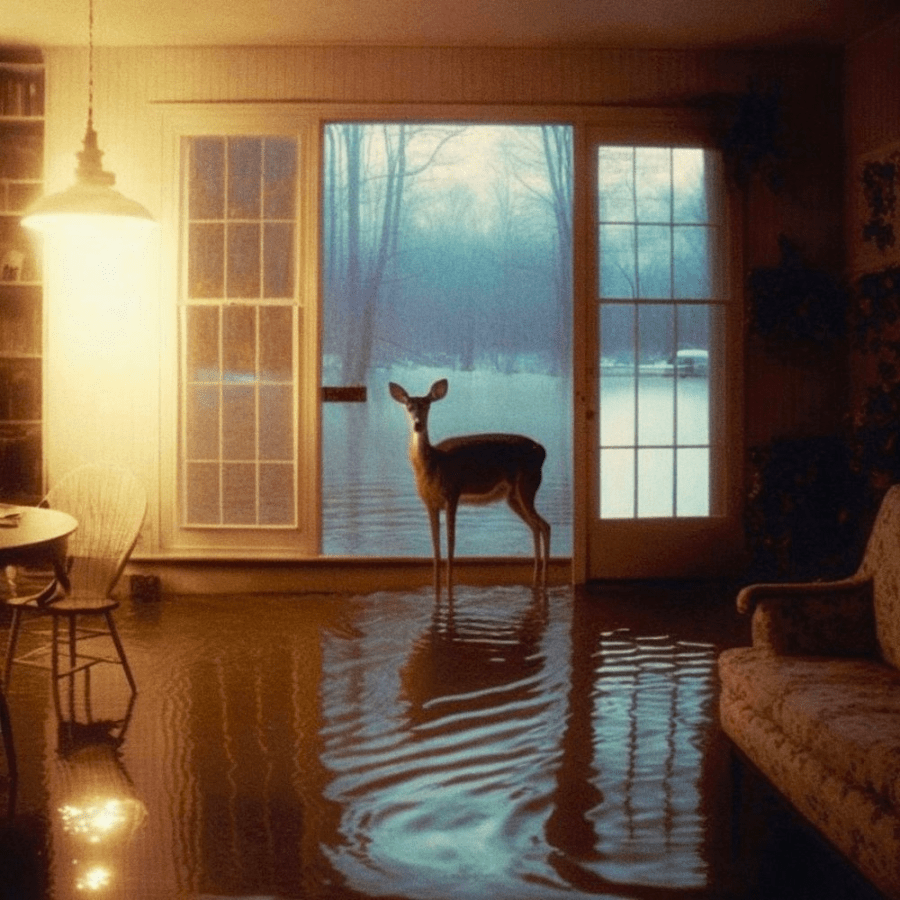
BW: What emotions or interpretations do you hope people experience from your work?
SV: My hope is simple: if someone comes across my work on Twitter or elsewhere, I hope it brings a little joy to their day. If my art can lighten their mood even slightly, I’d consider my objective fulfilled.
BW: What does the near future hold for Stephan Vasement’s art? Are there other tools or mediums you plan to explore?
SV: Initially, my aim is to complete the Swans collection. It’s intended to be released in its entirety, without subsequent additions. There’s still much work to be done on this project.
Afterward, I plan to delve into AI videos. I’m uncertain if I’ll conjure up anything noteworthy. Ideas occasionally strike me, which I jot down for future reference. Only time will tell.
For updates on all of our upcoming artist spotlights, subscribe to our newsletter below.
- SEO Powered Content & PR Distribution. Get Amplified Today.
- EVM Finance. Unified Interface for Decentralized Finance. Access Here.
- Quantum Media Group. IR/PR Amplified. Access Here.
- PlatoAiStream. Web3 Data Intelligence. Knowledge Amplified. Access Here.
- Source: https://rare.makersplace.com/2023/06/08/the-fear-of-not-trying-interview-with-ai-artist-stephan-vasement/?utm_source=rss&utm_medium=rss&utm_campaign=the-fear-of-not-trying-interview-with-ai-artist-stephan-vasement



